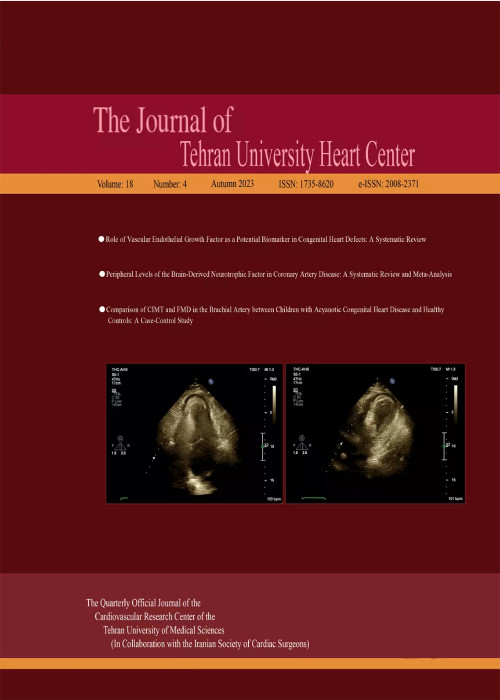Immediate Results and Six-Month Clinical Outcome after Percutaneous Coronary Intervention in Patients with Prior Coronary Artery Bypass
Author(s):
Abstract:
Background
Redo coronary artery bypass grafting surgery (CABG) is associated with a higher risk of mortality than the first operation. However, the impact of percutaneous coronary intervention (PCI) on the outcome in such patients is currently unclear. We evaluated the in-hospital and six-month clinical outcomes of post-CABG patients who underwent PCI in our center.Methods
Between April 2008 and July 2009, 71 post-CABG patients (16 women and 55 men) underwent 110 stent implantations (74% drug-eluting stents) for 89 lesions. Sixty percent of the PCI procedures were performed on the native coronary arteries, 32% on graft arteries, and 8% on both types of vessels. Major adverse cardiac events (MACE) were recorded in hospital and at six months’ follow-up.Results
The procedural success rate was 93%, and the in-hospital MACE rate was 5.6 % (1 death, 3 myocardial infarctions). At 6 months, the incidence of MACE was 5.6% (no death or myocardial infarction, but 4 target lesion revascularizations) and 4 (5.6 %) in-stent restenoses. There was no statistically significant difference in the comparison of MACE between the patients treated in either native arteries or in the grafts (15% vs.12%, p value = 0.8). According to the univariate analysis, hypertension and the use of the bare metal stent vs. the drug-eluting stent were the significant predictors of MACE, whereas the multivariate analysis showed that only hypertension (OR = 3.7, 95% CI 3.4-4, p value < 0.048) was the independent predictor of MACE. The mean of the left ventricular ejection fraction had no effect on the incidence of MACE (p value = 0.9). The multivariate analysis showed hypertension (p value < 0.048) and the use of the bare metal stent (p value < 0.018) were the independent predictors of MACE. The chronic total occlusion (CTO) (p value < 0.01) was the independent predictor of the success rate. The prevalence of diabetes had no impact on the incidence of MACE according to the univariate analysis (p value = 0.9). Our multivariate analysis showed that hypertension and the use of the bare metal stent were the independent predictors of MACE and that chronic total occlusion was the independent predictor of the procedural failure rate.Conclusion
PCI is preferable to redo CABG for post-CABG patients. The independent predictors of MACE were hypertension and bare metal stents.Language:
English
Published:
The Journal of Tehran University Heart Center, Volume:6 Issue: 1, Jan 2011
Page:
31
magiran.com/p824772
دانلود و مطالعه متن این مقاله با یکی از روشهای زیر امکان پذیر است:
اشتراک شخصی
با عضویت و پرداخت آنلاین حق اشتراک یکساله به مبلغ 1,390,000ريال میتوانید 70 عنوان مطلب دانلود کنید!
اشتراک سازمانی
به کتابخانه دانشگاه یا محل کار خود پیشنهاد کنید تا اشتراک سازمانی این پایگاه را برای دسترسی نامحدود همه کاربران به متن مطالب تهیه نمایند!
توجه!
- حق عضویت دریافتی صرف حمایت از نشریات عضو و نگهداری، تکمیل و توسعه مگیران میشود.
- پرداخت حق اشتراک و دانلود مقالات اجازه بازنشر آن در سایر رسانههای چاپی و دیجیتال را به کاربر نمیدهد.
In order to view content subscription is required
Personal subscription
Subscribe magiran.com for 70 € euros via PayPal and download 70 articles during a year.
Organization subscription
Please contact us to subscribe your university or library for unlimited access!


